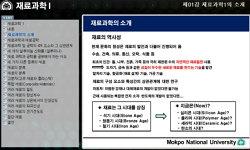The R-curve for in situ-toughened SiC-30 wt% TiC composites was estimated by the indentation-strength method and compared to that of monolithic SiC with toughened microstructure. Both materials exhibited rising R-curve behavior. The SiC-TiC composites...
http://chineseinput.net/에서 pinyin(병음)방식으로 중국어를 변환할 수 있습니다.
변환된 중국어를 복사하여 사용하시면 됩니다.
- 中文 을 입력하시려면 zhongwen을 입력하시고 space를누르시면됩니다.
- 北京 을 입력하시려면 beijing을 입력하시고 space를 누르시면 됩니다.
https://www.riss.kr/link?id=A106128948
- 저자
- 발행기관
- 학술지명
- 권호사항
-
발행연도
2001
-
작성언어
English
- 주제어
-
등재정보
SCOPUS,KCI등재,SCIE
-
자료형태
학술저널
- 발행기관 URL
-
수록면
1075-1079(5쪽)
- 제공처
- 소장기관
-
0
상세조회 -
0
다운로드
부가정보
다국어 초록 (Multilingual Abstract)
The R-curve for in situ-toughened SiC-30 wt% TiC composites was estimated by the indentation-strength method and compared to that of monolithic SiC with toughened microstructure. Both materials exhibited rising R-curve behavior. The SiC-TiC composites, however, displayed better damage tolerance and higher resistance to crack growth. Total volume fractions of SiC key grains, which take part in toughening mechanisms such as crack bridging and crack deflection, were 0.607 for monolithic SiC ceramics and 0.614 for SiC-TiC composites. From the microstructural characterization and the residual stress calculation, it was inferred that this superior performance of SiC-TiC composites can be attributed to stress-induced microcracking at heterophase (SiC/TiC) boundaries and some contribution from carck deflection by TiC grains.
동일학술지(권/호) 다른 논문
-
산화철 폐촉매로부터 합성된 NiZn- 페라이트의 자기적 특성
- 한국세라믹학회
- 황연
- 2001
- SCOPUS,KCI등재,SCIE
-
LCD 백라이트를 위해 스크린 프린팅법으로 제조된 AC Powder EL 소자의 유기결합제와 막두께가 광전기적 성질에 미치는 영향
- 한국세라믹학회
- 이강렬
- 2001
- SCOPUS,KCI등재,SCIE
-
- 한국세라믹학회
- 김은동
- 2001
- SCOPUS,KCI등재,SCIE
-
침전제 적하법을 이용한 $TiO_2$고정화 다공체 제조
- 한국세라믹학회
- 신대용
- 2001
- SCOPUS,KCI등재,SCIE







 ScienceON
ScienceON







